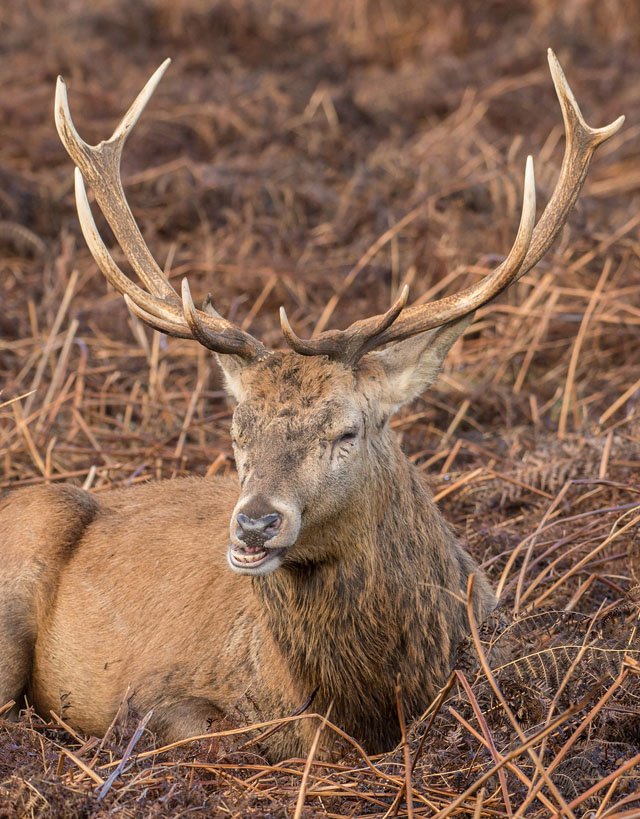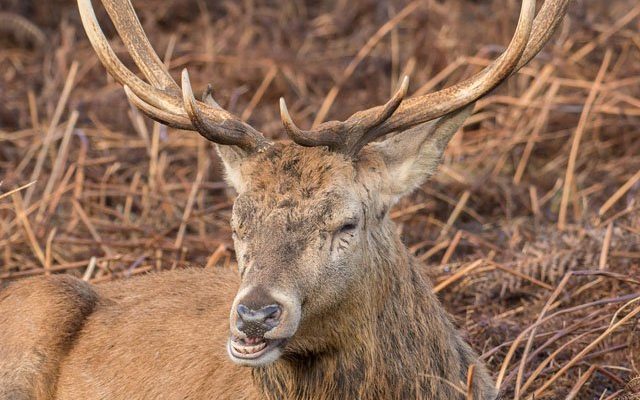
Understanding the red deer’s diet is like peeking behind the curtain of a well-orchestrated performance. These animals are herbivores, meaning their meals are entirely plant-based, and they have quite a diverse menu. From lush green grasses to crunchy leaves, and even the bark off trees, they’re not picky eaters. This adaptability is key for their survival, especially when food sources vary with the seasons.
So, grab a cup of coffee, and let’s explore the intricate world of red deer—how they eat, what they hunt, and how they stay safe in the wild.
What Do Red Deer Eat?
Red deer are primarily herbivores, and their diet varies based on the seasons and available resources. During the spring and summer months, they feast on tender grasses, herbs, and shrubs. Think of a salad bar where they’re the most selective diners, choosing the freshest leaves. They even nibble on soft plants like clover and wildflowers.
In the autumn, their diet shifts as they prepare for the winter. They begin to include more woody plants in their meals. This includes the bark, twigs, and buds of trees like oak and birch. It’s nature’s way of telling them to bulk up for the colder months. During winter, when food is scarce, red deer rely on the tough, fibrous materials that can sustain them through harsh weather.
Often, you might see red deer grazing in groups, called herds, which helps them locate food sources more efficiently. But why do they stick together? It’s a safety net against predators, but it also allows them to share information about the best grazing spots.
How Does Seasonal Change Affect Their Diet?
Seasons dramatically influence the red deer’s diet and behavior. In the spring, the explosion of new growth provides an abundance of soft vegetation, making it a prime time for red deer to bulk up after a long winter. As they graze, they’re not just filling their bellies; they’re also gearing up for the mating season, known as the rut, which occurs in the fall.
By the time autumn rolls around, their eating habits adapt again. With foliage disappearing and the ground hardening, red deer start to forage for more sturdy plants. It’s like switching from a delightful summer buffet to a hearty winter stew. They’ll munch on whatever they can find—leaves, acorns, and the last bits of grass.
In winter, with food limited, red deer turn to more challenging sources. This is a tough time for them, and they may spend hours searching for bark on which to graze. Their ability to adapt to available food resources is one reason they thrive in various habitats, from dense forests to open moorlands.
The Role of Antlers in Hunting Strategies
You might be wondering about the role of those impressive antlers that red deer sport. Beyond providing an eye-catching silhouette, these antlers play a significant role during the rut when males compete for mates. But how does this relate to hunting strategies?
In essence, antlers serve as a display of fitness and dominance. During the mating season, male red deer, known as stags, will clash their antlers together in a battle for females. This ritual not only helps determine which male is stronger but also showcases the importance of competition in their survival. Here’s the thing: it’s not just about the physical confrontation; it’s also about impressing the females. A healthy stag with a grand set of antlers is more likely to attract mates, ensuring the continuation of their genes.
However, these antlers are shed annually and regrow, which requires significant energy and nutrients. So, having a robust diet during the growing season is crucial for their overall success.
How Do Red Deer Avoid Predators?
When you think of survival, it’s not just about the food. It’s also about staying off the menu. Red deer have developed several strategies to avoid becoming a meal for predators like wolves and big cats. One of their primary defenses is alertness. With large, expressive eyes, red deer have a wide field of vision, helping them spot threats early.
They often rely on their keen sense of hearing and smell, too. If they sense danger, they can quickly alert the rest of the herd. It’s like an early warning system, and it works wonders in the wild. When one deer gets uneasy, others will pick up on that and be on high alert.
Herding together also provides safety in numbers. As a group, they can watch out for each other. If a predator approaches, some members of the herd might stay and distract the threat, giving others a chance to escape. It’s teamwork at its finest.
Foraging Techniques of Red Deer
Foraging isn’t just about randomly munching on plants. Red deer have learned specific techniques to help them find food in their environment. When they’re searching for something to eat, they typically use their sense of smell to locate the freshest vegetation.
Here’s a fun fact: red deer often use their tongues to strip leaves from branches. They can twirl their tongues around tough foliage and pull it off—pretty clever, right? This lets them access the nutrients in plants that might be difficult for other herbivores to reach.
In addition to using their tongues, red deer can also be quite selective about what they eat. They tend to ignore plants that may be unappetizing or toxic, honing in on the most nutritious options available. This selective grazing means they’re getting the best fuel possible to support their active lifestyles.
Social Dynamics and Their Impact on Hunting Strategies
Social dynamics within red deer herds can also influence how they forage and protect themselves. For instance, females (hinds) often lead the way when looking for food, especially when caring for their young. Young deer learn from their mothers and other experienced members of the herd, picking up on effective foraging and avoidance strategies.
Interestingly, younger male deer often watch and mimic older stags to learn successful behaviors. This social learning is crucial for their survival. If you think about it, it’s like a rite of passage—learning the ropes from those who have been through the thick of it before.
When it comes to hunting strategies, knowing the environment and having support from the herd significantly increases their chances of finding food while avoiding predators.
The diet and hunting strategies of red deer showcase their incredible adaptability and social structure. From their selective grazing habits to their impressive natural defenses, these animals thrive in a variety of environments.
Understanding these dynamics not only highlights the importance of red deer in their ecosystems but also encourages us to appreciate the delicate balance of nature. Next time you think of red deer, remember they’re not just majestic creatures but skilled survivors—navigating the wild with grace and intelligence. It’s a beautiful reminder of how life unfolds in the natural world, where every creature plays its part.

